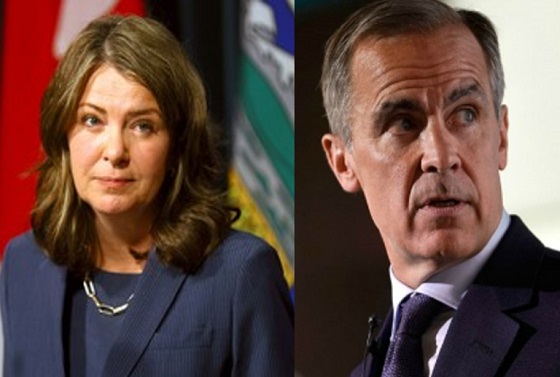Fraser Institute
Virtual care will break the Canada Health Act—and that’s a good thing

From the Fraser Institute
The leadership of the Canadian Medical Association (CMA) is facing sharp criticism for its recent proposal to effectively ban private payment for virtual care. In a clear example of putting politics before patients, this would only erect additional barriers for those seeking care.
Moreover, it’s a desperate bid to cling to an outdated—and failed—model of health care while underestimating modern-day innovations.
Virtual care—online video doctor consultations—is a private-sector innovation. In response to our government system’s inability to provide timely care, private companies such as Maple have been offering these services to Canadians for almost a decade. In fact, the public system only pushed meaningfully into the virtual space during COVID when it established partnerships with these private companies alongside setting up new fee codes for virtual consultations.
In return for improving access to physician consultations for thousands of Canadians, these virtual care companies have been rewarded with increased government scrutiny and red tape. The weapon of choice? The Canada Health Act (CHA).
Specifically, sections 18 to 21 of the CHA prohibit user fees and extra billing for “medically necessary” services. Further, the insurance plan of a province must be publicly administered and provide “reasonable access” to 100 per cent of insured services. Provinces found in violation are punished by the federal government, which withholds a portion (or all) of federal health-care transfer payments.
Until recently, there had been no obvious conflict between the CHA and privately paid-for virtual care—primarily because the provinces are free to determine what’s medically necessary. Until recently, many provinces did not even have billing codes for virtual care. As virtual services are increasingly provided by the public sector, however, the ability to innovatively provide care for paying patients (either out-of-pocket or through private insurance) becomes restricted further.
Within this context, the CMA recently recommended formally including virtual care services within the public system, alongside measures to ensure “equitable access.” At the same time, it reiterated its recommendation that private insurance to access medically necessary services covered by the CHA be prohibited.
See where this is going?
The kicker is an additional recommendation banning dual practice (i.e. physicians working in both the public and private sector) except under certain conditions. This means doctors in the public system who could otherwise allocate their spare hours to private appointments online would now have to choose to operate exclusively in either the public or private system.
The combined effect of these policies would ensure that innovative private options for virtual care—whether paid for out-of-pocket or though private insurance—will either be overtaken by bureaucracies or disappear entirely.
But what the CMA report fails to recognize is that virtual care has expanded access to services the government fails to provide—there’s little reason to suspect a government takeover of the virtual-care sector will make things better for patients. And even if governments could somehow prevent Canadian doctors and companies providing these services privately, virtual care is not beholden to Canada’s physical borders. Patients with a little bit of technical knowhow will simply bypass the Canadian system entirely by having virtual consultations with doctors abroad. If Canadians can figure out how to access their favourite show in another country, you can be sure they’ll find a way to get a consultation with a doctor in Mumbai instead of Montreal.
Instead of forcing physicians and patients to operate within the crumbling confines of government-run health care, the CMA’s leadership should be grateful for the pressure valve that the private sector has produced. We should celebrate the private innovators who have provided Canadians better access to health care, not finding ways to shut them down in favour of more government control.
Author:
Business
The great policy challenge for governments in Canada in 2026

From the Fraser Institute
According to a recent study, living standards in Canada have declined over the past five years. And the country’s economic growth has been “ugly.” Crucially, all 10 provinces are experiencing this economic stagnation—there are no exceptions to Canada’s “ugly” growth record. In 2026, reversing this trend should be the top priority for the Carney government and provincial governments across the country.
Indeed, demographic and economic data across the country tell a remarkably similar story over the past five years. While there has been some overall economic growth in almost every province, in many cases provincial populations, fuelled by record-high levels of immigration, have grown almost as quickly. Although the total amount of economic production and income has increased from coast to coast, there are more people to divide that income between. Therefore, after we account for inflation and population growth, the data show Canadians are not better off than they were before.
Let’s dive into the numbers (adjusted for inflation) for each province. In British Columbia, the economy has grown by 13.7 per cent over the past five years but the population has grown by 11.0 per cent, which means the vast majority of the increase in the size of the economy is likely due to population growth—not improvements in productivity or living standards. In fact, per-person GDP, a key indicator of living standards, averaged only 0.5 per cent per year over the last five years, which is a miserable result by historic standards.
A similar story holds in other provinces. Prince Edward Island, Nova Scotia, Quebec and Saskatchewan all experienced some economic growth over the past five years but their populations grew at almost exactly the same rate. As a result, living standards have barely budged. In the remaining provinces (Newfoundland and Labrador, New Brunswick, Ontario, Manitoba and Alberta), population growth has outstripped economic growth, which means that even though the economy grew, living standards actually declined.
This coast-to-coast stagnation of living standards is unique in Canadian history. Historically, there’s usually variation in economic performance across the country—when one region struggles, better performance elsewhere helps drive national economic growth. For example, in the early 2010s while the Ontario and Quebec economies recovered slowly from the 2008/09 recession, Alberta and other resource-rich provinces experienced much stronger growth. Over the past five years, however, there has not been a “good news” story anywhere in the country when it comes to per-person economic growth and living standards.
In reality, Canada’s recent record-high levels of immigration and population growth have helped mask the country’s economic weakness. With more people to buy and sell goods and services, the overall economy is growing but living standards have barely budged. To craft policies to help raise living standards for Canadian families, policymakers in Ottawa and every provincial capital should remove regulatory barriers, reduce taxes and responsibly manage government finances. This is the great policy challenge for governments across the country in 2026 and beyond.
Alberta
Alberta Next Panel calls for less Ottawa—and it could pay off

From the Fraser Institute
By Tegan Hill
Last Friday, less than a week before Christmas, the Smith government quietly released the final report from its Alberta Next Panel, which assessed Alberta’s role in Canada. Among other things, the panel recommends that the federal government transfer some of its tax revenue to provincial governments so they can assume more control over the delivery of provincial services. Based on Canada’s experience in the 1990s, this plan could deliver real benefits for Albertans and all Canadians.
Federations such as Canada typically work best when governments stick to their constitutional lanes. Indeed, one of the benefits of being a federalist country is that different levels of government assume responsibility for programs they’re best suited to deliver. For example, it’s logical that the federal government handle national defence, while provincial governments are typically best positioned to understand and address the unique health-care and education needs of their citizens.
But there’s currently a mismatch between the share of taxes the provinces collect and the cost of delivering provincial responsibilities (e.g. health care, education, childcare, and social services). As such, Ottawa uses transfers—including the Canada Health Transfer (CHT)—to financially support the provinces in their areas of responsibility. But these funds come with conditions.
Consider health care. To receive CHT payments from Ottawa, provinces must abide by the Canada Health Act, which effectively prevents the provinces from experimenting with new ways of delivering and financing health care—including policies that are successful in other universal health-care countries. Given Canada’s health-care system is one of the developed world’s most expensive universal systems, yet Canadians face some of the longest wait times for physicians and worst access to medical technology (e.g. MRIs) and hospital beds, these restrictions limit badly needed innovation and hurt patients.
To give the provinces more flexibility, the Alberta Next Panel suggests the federal government shift tax points (and transfer GST) to the provinces to better align provincial revenues with provincial responsibilities while eliminating “strings” attached to such federal transfers. In other words, Ottawa would transfer a portion of its tax revenues from the federal income tax and federal sales tax to the provincial government so they have funds to experiment with what works best for their citizens, without conditions on how that money can be used.
According to the Alberta Next Panel poll, at least in Alberta, a majority of citizens support this type of provincial autonomy in delivering provincial programs—and again, it’s paid off before.
In the 1990s, amid a fiscal crisis (greater in scale, but not dissimilar to the one Ottawa faces today), the federal government reduced welfare and social assistance transfers to the provinces while simultaneously removing most of the “strings” attached to these dollars. These reforms allowed the provinces to introduce work incentives, for example, which would have previously triggered a reduction in federal transfers. The change to federal transfers sparked a wave of reforms as the provinces experimented with new ways to improve their welfare programs, and ultimately led to significant innovation that reduced welfare dependency from a high of 3.1 million in 1994 to a low of 1.6 million in 2008, while also reducing government spending on social assistance.
The Smith government’s Alberta Next Panel wants the federal government to transfer some of its tax revenues to the provinces and reduce restrictions on provincial program delivery. As Canada’s experience in the 1990s shows, this could spur real innovation that ultimately improves services for Albertans and all Canadians.
-

 Energy1 day ago
Energy1 day agoRulings could affect energy prices everywhere: Climate activists v. the energy industry in 2026
-

 Digital ID1 day ago
Digital ID1 day agoThe Global Push for Government Mandated Digital IDs And Why You Should Worry
-

 Bruce Dowbiggin1 day ago
Bruce Dowbiggin1 day agoThe Rise Of The System Engineer: Has Canada Got A Prayer in 2026?
-

 International1 day ago
International1 day agoMaduro says he’s “ready” to talk
-

 International1 day ago
International1 day agoLOCKED AND LOADED: Trump threatens U.S. response if Iran slaughters protesters
-

 International4 hours ago
International4 hours ago“Captured and flown out”: Trump announces dramatic capture of Maduro
-

 International3 hours ago
International3 hours agoTrump Says U.S. Strike Captured Nicolás Maduro and Wife Cilia Flores; Bondi Says Couple Possessed Machine Guns
-

 Business3 hours ago
Business3 hours agoVacant Somali Daycares In Viral Videos Are Also Linked To $300 Million ‘Feeding Our Future’ Fraud






